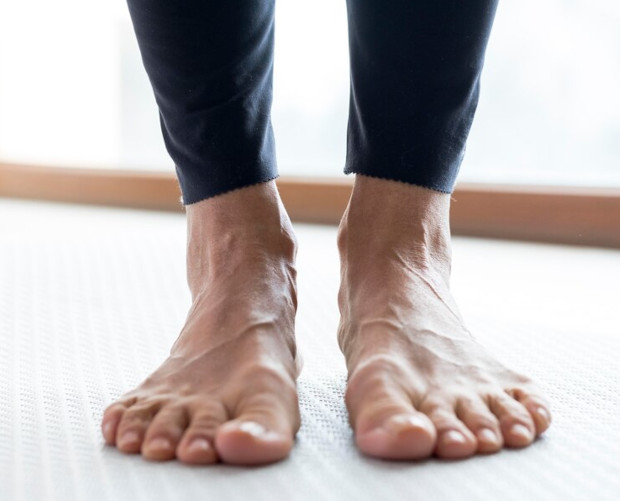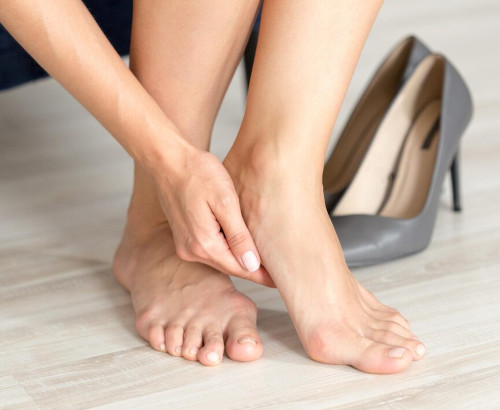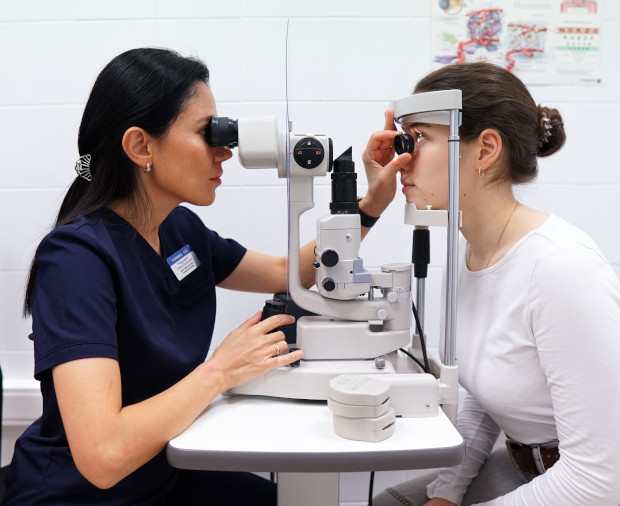Treatment of cracked feet

specialists

equipment

treatment
What is the root of the problem?

Difficulties lie in the variety of reasons that can cause cracks in the skin. They fall into two main categories: internal and external factors. Among the internal factors, special attention should be paid to:
- Metabolism and endocrine system diseases, including diabetes
- Allergic manifestations
- Problems with the functioning of the stomach, intestines, liver and kidneys
- Hormonal imbalances
- Deformations of the feet, such as flat feet
- Diseases of the heart and blood vessels
- Dermatological diseases, including eczema and psoriasis
- Side effects of drug treatment
- Lack of fat in the diet
Typically, cracks in the feet, especially in the heels, indicate other problems in the body, including vitamin deficiencies or disorders of the musculoskeletal system.

As for external factors that provoke cracks, these include:
- Tight shoes and products made from synthetic materials
- The influence of climatic conditions and the environment
- Ignoring basic hygiene
- Mistakes during the pedicure process
- Use of water with chlorine and sudden temperature changes, for example, in baths
- Walking without shoes on hard surfaces
Surface cracks are easier to treat and usually leave no marks. Deep ones reach the subcutaneous layer, can leave behind scars and require more attention. To avoid further problems, it is recommended to seek medical help at the first sign of cracks.
Ignoring this problem increases the risk of fungi and bacteria entering the wound, which can lead to skin inflammation and the formation of pustules in the affected areas.

Harbingers of cracked heels
Cracks in the feet do not appear suddenly. There are certain signs that precede their formation. Among the obvious symptoms:
- Increased dryness of feet and exfoliation of skin
- Formation of calluses and corns
- Pain when moving
Over time, initial minor cracks can develop into deeper and wider cracks, increasing the risk of infection due to the penetration of bacteria and fungi.
The first step to solving the problem of cracked skin on the feet is to contact a podiatrist or dermatologist. The doctor will evaluate:
- General skin condition
- Humidity level
- Presence of inflammatory processes
This is followed by collecting an anamnesis to identify chronic diseases and the patient’s lifestyle, which may indicate possible causes of the problem.
An important part of the diagnosis is a laboratory examination aimed at identifying hormonal disorders, infections and other internal factors that contribute to the appearance of cracks.
In some cases, ultrasound or computed tomography may be recommended for a more detailed study of the condition of the skin and tissues of the feet, as well as to assess the extent of damage.
Strategies for treating cracked heels
To choose a treatment method for cracks, you need to understand the cause and take into account the characteristics of the patient’s body.
Fighting methods
Medical specialists usually prefer methods that do not require surgical intervention, among which are:
- Use of creams and ointments with moisturizing and restorative effects
- Physiotherapy courses
- Massage sessions
- Use of orthopedic support devices
Foot treatments
Health care facilities provide specialized foot treatments, including:
- High-quality pedicure from professionals
- Hardware treatment of problem areas on the feet
- Paraffin therapy
- Treatment using iontophoresis
These approaches heal cracks and restore the skin.
In exceptional cases, when conventional methods are powerless, surgical intervention may be necessary, although this is a last resort.
Lifestyle
Lifestyle affects health. You need to keep in mind that:
- Preventive measures play a key role in caring for foot health, helping not only to cope with current problems, but also preventing their reoccurrence. It is important to regularly care for the skin of your feet and consult with specialists in a timely manner
- Regular visits to a podiatrist help you professionally care for the skin of your feet, removing rough areas and preventing the appearance of cracks
- A healthy diet rich in vitamins and minerals is important to keep the skin in good condition, and the use of nourishing creams after water treatments moisturizes
- Regular foot massage improves blood circulation and metabolic processes
- Weight control prevents unnecessary pressure on the legs, reducing the risk of cracks
- For foot deformities, the use of orthopedic devices helps avoid further damage
Proper foot care, including removing dead cells, ensures their health and beauty. Self-medication can lead to aggravation of the problem, so if cracks appear, you need to contact a specialist to identify and eliminate the causes of their occurrence.
Prevention is the key to health
The basis for effectively getting rid of cracks is to prevent their reoccurrence. This requires regular foot skin care and timely seeking advice and support from qualified specialists.
It is recommended to visit a podiatrist at least once a month. Such a specialist will get rid of rough areas, calluses and corns, thereby preventing the formation of new cracks.
Proper nutrition also plays a vital role. A healthy diet rich in vitamins and minerals is essential to keep your skin in good condition. Also remember to moisturize your skin regularly after a bath or shower.
Foot massage is another way to maintain their health. Regular sessions improve blood circulation and metabolism, which has a very beneficial effect on the condition of the feet, be it self-massage or the help of a professional.
By controlling your weight, you minimize excess pressure on your feet, thereby reducing the risk of cracks.
When diagnosing flat feet or other deformities, it is necessary to use special orthopedic devices, such as insoles, arch supports or shoes designed to correct and prevent further damage to the feet.
Proper skin care, including regularly removing dead skin cells with pumice, also helps maintain health.
Independent attempts to solve the problem of cracks can lead to undesirable consequences. Therefore, it is important to immediately contact specialists who will help not only get rid of the current condition, but also identify and eliminate the root causes.

Our doctors

This award is given to clinics with the highest ratings according to user ratings, a large number of requests from this site, and in the absence of critical violations.

This award is given to clinics with the highest ratings according to user ratings. It means that the place is known, loved, and definitely worth visiting.

The ProDoctors portal collected 500 thousand reviews, compiled a rating of doctors based on them and awarded the best. We are proud that our doctors are among those awarded.
Make an appointment at a convenient time on the nearest date
Price
Other Services
Helio therapy
Manual therapyPlantar warts
Diabetic foot








Different types of cracks
In medical practice, foot cracks are classified according to several criteria. Exist:
Cracks in the feet can form in various places, depending on which they are divided into:
Cracks on the lateral surfaces of the feet are less common and cause significant psychological discomfort, since they are visible.